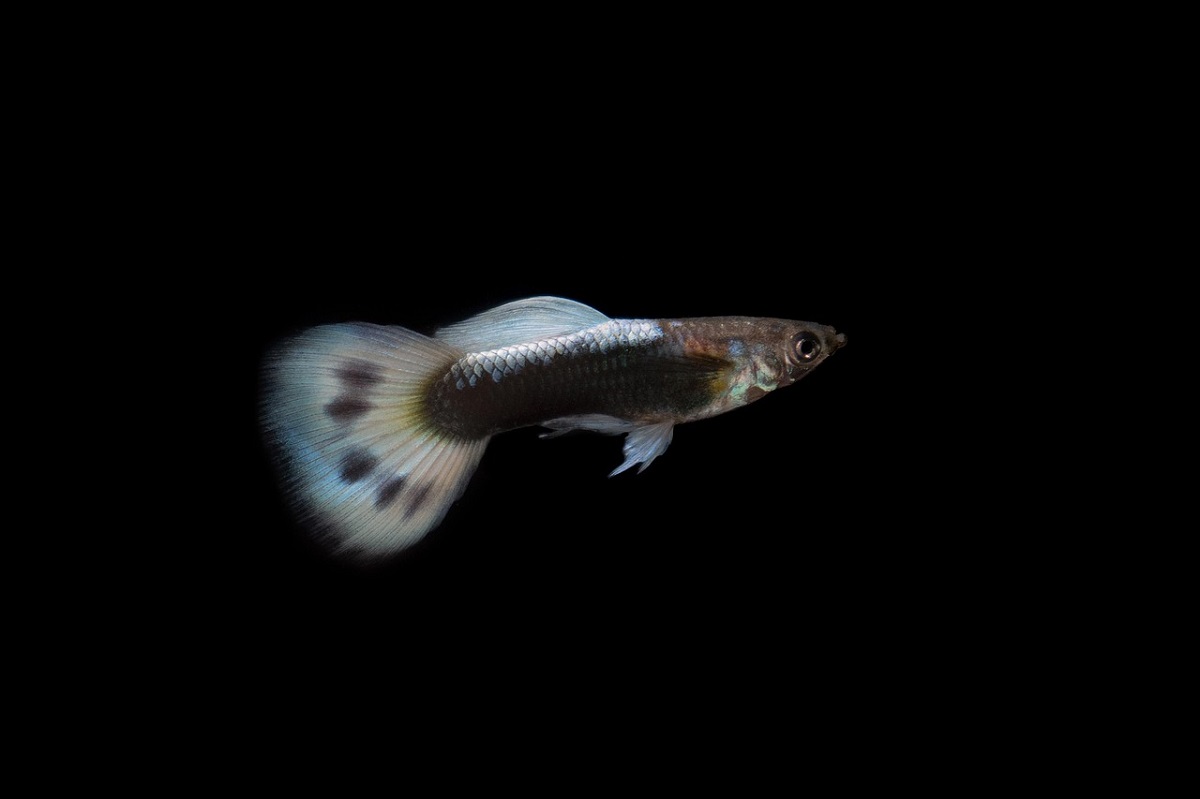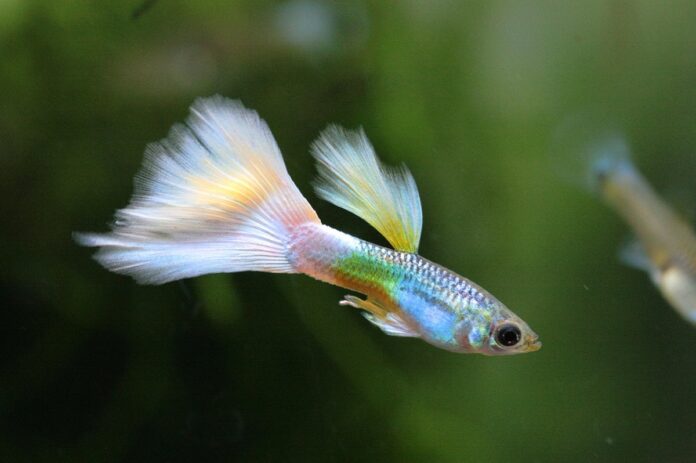Summary: Guppies are small, vibrant freshwater fish beloved by beginners and hobbyists alike. Originating from South America, they display a wide array of colors and tail shapes due to selective breeding. Guppies are hardy, peaceful, and prolific breeders, making them ideal for community tanks. They thrive in warm water (22–28 °C), enjoy a varied diet of flakes, live or frozen foods, and help maintain aquarium health by devouring algae and mosquito larvae.
Guppies, scientifically named Poecilia reticulata, are one of the most popular freshwater fish species among aquarium enthusiasts around the world. Their small size, peaceful nature, and strikingly vibrant colors make them a favorite choice for both beginner aquarists and seasoned fishkeepers. Guppies are admired not only for their dazzling appearance but also for their resilience, ease of care, and playful behavior that brings life and activity to any aquarium setting.
What Exactly Is a Guppy?

Guppies are small, tropical, freshwater fish that belong to the Poeciliidae family. As livebearers, guppies give birth to live fry rather than laying eggs, which sets them apart from many other fish species. Originally native to parts of South America, including Venezuela, Guyana, and Brazil, guppies have been introduced to freshwater environments in many other countries across the globe.
Due to their adaptability and reproductive capacity, guppies have become widespread and are now found in natural and artificial water bodies in various climates. In the aquarium hobby, they are known for their hardiness, making them one of the easiest species to care for, even for people with no prior fishkeeping experience.
Historical Background and Discovery of Guppies
The guppy was first discovered in 1866 by Robert John Lechmere Guppy in Trinidad. After sending specimens to the British Museum, the species was named in his honor. Over the years, guppies have been used in scientific research, particularly in studies related to evolutionary biology, genetics, and ecology, because of their rapid breeding and observable behavior changes in different environments.
In addition to being popular pets, guppies have also played a practical role in public health efforts. In some regions, guppies were introduced into stagnant water sources to help control mosquito populations, as they consume mosquito larvae and reduce the risk of mosquito-borne diseases like malaria and dengue.
Physical Characteristics and Colorful Varieties
Guppies are especially well known for their stunning range of colors and patterns, which have been selectively bred over generations to produce a vast variety of beautiful strains. While wild guppies are generally duller in color, captive-bred guppies can exhibit almost every color of the rainbow, making each fish unique in appearance.
Size and Sexual Dimorphism
Male guppies are typically smaller than females, usually growing to about 1.5 inches (3.5 cm) in length, whereas females can grow up to 2.5 inches (6 cm). Males are also more colorful and have longer, more elaborate fins, while females are usually less vibrant and have a rounder body shape.
Color and Tail Types
There are hundreds of guppy strains with various color combinations and tail types. Some of the most popular include:
Color Patterns: Albino, Blue, Red, Yellow, Green, Tuxedo, Cobra, Snakeskin, and Neon.
Tail Shapes: Delta tail, Fan tail, Sword tail, Round tail, Spade tail, Lyretail, and Veil tail.
Each guppy strain is developed through selective breeding to enhance particular features, such as color intensity, fin shape, and body markings.
Guppy Behavior and Social Interaction
Guppies are generally peaceful and highly sociable fish that enjoy swimming in groups. They are active during the day and are often seen darting around the tank or displaying their fins in front of other fish. Male guppies are known to engage in playful chasing behavior, especially when courting females.
Due to their social nature, guppies thrive best when kept in small groups rather than in isolation. A good rule of thumb is to keep them in male-to-female ratios of 1:2 or 1:3 to minimize stress on female guppies from constant mating attempts by males.
Ideal Tank Setup for Guppies
Setting up the right environment is crucial for keeping your guppies happy and healthy. Although guppies do not require very large tanks, providing enough space, clean water, and proper equipment will significantly improve their quality of life.
Tank Size
A minimum of 10 gallons is recommended for a small group of guppies, but larger tanks of 20 gallons or more are ideal if you plan to keep multiple fish or a mixed community aquarium.
Filtration and Heating
Guppies need clean, well-oxygenated water to thrive, so a reliable filter is essential. Since guppies are tropical fish, maintaining a stable water temperature between 72°F and 82°F (22°C–28°C) is also important, which typically requires a heater in cooler climates.
Decorations and Plants
Decorating the tank with natural or artificial plants, driftwood, rocks, and hiding spots not only makes the aquarium visually appealing but also provides shelter and comfort for the fish. Live plants such as Java moss, Hornwort, and Anubias are especially beneficial as they improve water quality and create a natural habitat for guppies.
Water Quality and Parameters
Maintaining stable water parameters is crucial for the health and well-being of your guppies. They are quite adaptable, but sudden changes in water conditions can cause stress and lead to illness.
Ideal Water Parameters for Guppies:
Temperature: 72°F to 82°F (22°C to 28°C)
pH: 6.8 to 7.8
Hardness: 8–12 dGH
Ammonia and Nitrite: 0 ppm (parts per million)
Nitrate: Less than 40 ppm
Weekly water changes of around 25–30% are recommended to keep the water clean and remove waste buildup.
Feeding Guppies: What Do They Eat?
Guppies are omnivorous fish that eat a variety of food sources, both animal and plant-based. A well-balanced diet is key to maintaining their vibrant colors, a strong immune system, and reproductive health.
Diet Recommendations:
Staple Food: High-quality flake or pellet food specifically designed for tropical fish.
Protein-Rich Foods: Frozen or live brine shrimp, bloodworms, daphnia, and mosquito larvae.
Vegetable Options: Blanched spinach, zucchini, and shelled peas for added nutrients and fiber.
Feed your guppies once or twice a day, offering only as much as they can consume within 2–3 minutes. Overfeeding can lead to poor water quality and health problems.
How to Breed Guppies Successfully
One of the most fascinating aspects of keeping guppies is their ability to breed easily and often. If you have both male and female guppies in the same tank, chances are they will reproduce without any extra effort from your side.
Breeding Process
Male guppies use a specialized fin called a gonopodium to fertilize the female internally. After fertilization, the female guppy can store sperm for several months and give birth multiple times without mating again. The gestation period typically lasts between 21 to 30 days, and a female guppy can give birth to anywhere from 20 to over 100 fry at once.
Guppy Fry Care and Growth
Newborn guppy fry are very small and vulnerable, making them easy targets for adult guppies and other fish in the tank. To improve fry survival rates, many aquarists move pregnant females to a separate breeding tank or use a breeding box.
Fry Care Tips
Keep fry in a separate tank with a sponge filter to prevent strong water currents.
Feed them specialized fry food, crushed flakes, or live baby brine shrimp.
Perform frequent water changes to maintain cleanliness.
Provide plants and hiding spots to reduce stress and promote healthy growth.
Fry typically show noticeable growth within the first few weeks and can reach adult size in 2 to 3 months.
Common Guppy Health Problems
Although guppies are generally hardy, they can still fall victim to various diseases, especially when kept in poor water conditions or overcrowded tanks.
Common Illnesses
Ich (White Spot Disease): Small white dots on the skin and fins, caused by a parasite.
Fin Rot: Decaying or frayed fins due to bacterial infection or injury.
Velvet Disease: Gold or rusty dust on the body, caused by protozoa.
Swim Bladder Disorder: Difficulty swimming or floating, usually due to overfeeding.
Preventative Care:
Quarantine new fish before introducing them to the main tank.
Maintain clean water with regular testing and changes.
Avoid overfeeding and remove uneaten food promptly.
Use aquarium salt or medications as needed, following dosage instructions carefully.
Compatible Tank Mates for Guppies
Because guppies are peaceful and non-aggressive, they do best when kept with other gentle, community-friendly fish. Avoid housing them with fin-nippers or aggressive species.
Best Guppy Tank Mates:
Mollies
Platies
Corydoras catfish
Neon or ember tetras
Swordtails
Cherry barbs (non-aggressive types)
Snails and freshwater shrimp
Guppy Lifespan and Factors That Affect Longevity
On average, guppies live between 2 to 3 years in a home aquarium. However, with excellent care, optimal water quality, and a nutritious diet, some guppies can live up to 5 years.
Factors such as genetics, diet, stress levels, and exposure to disease all contribute to how long a guppy will live.
Fun and Fascinating Guppy Facts
Guppies can give birth every 4–6 weeks under the right conditions.
They can identify and recognize their tank mates and even their human caretakers.
Male guppies constantly perform mating dances to attract females.
Guppies have been used in space research experiments due to their fast reproduction.
Conclusion
Guppies are truly remarkable creatures that offer more than just beauty to your aquarium. Their playful personalities, stunning colors, and fascinating breeding behavior make them a joy to observe and care for. Whether you’re a beginner looking to start your first aquarium or a seasoned aquarist seeking a low-maintenance, rewarding fish species, guppies are an excellent choice.
Frequently Asked Questions
What is a guppy fish?
A guppy is a small freshwater tropical fish known for its bright colors, distinctive tail shapes, and peaceful nature.
Where do guppies come from?
Guppies originally come from northeastern South America and have been introduced to many other regions worldwide.
How big do guppy fish get?
Adult guppies typically reach around 1.5 to 2 inches (4–6 cm) in length.
What do guppies eat?
Guppies are omnivores and eat flakes, pellets, frozen or live foods like brine shrimp, and they help clear algae and mosquito larvae.
What water conditions do guppies need?
Guppies thrive in warm water between 22–28 °C (72–82 °F) with a pH of 6.8–7.8 and clean, well-filtered conditions.
How often do guppies breed?
Guppies are livebearers and can give birth roughly every 4–6 weeks under optimal conditions.
Are guppies good for beginners?
Yes, guppies are ideal beginner fish due to their hardiness, simple care requirements, and peaceful nature.
Can guppies live with other fish?
Guppies are generally peaceful and can cohabit well with other non-aggressive community fish like tetras and mollies.
How long do guppy fish live?
With proper care, guppies typically live 2–3 years.
Do guppies need a heater?
Yes—guppies prefer stable aquarium temperatures around 22–28 °C, which usually requires a heater in cooler environments.

